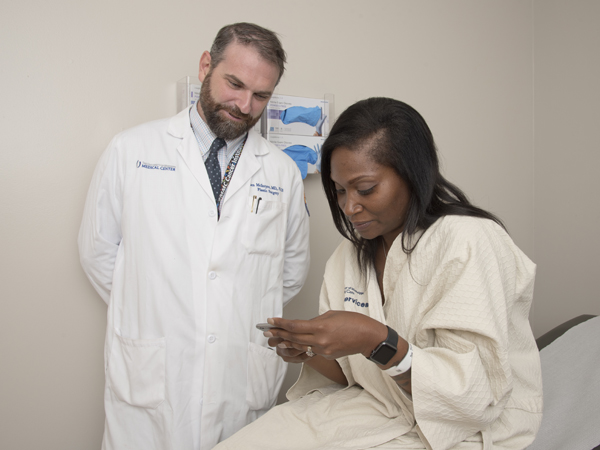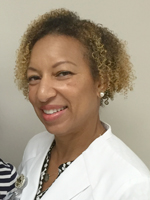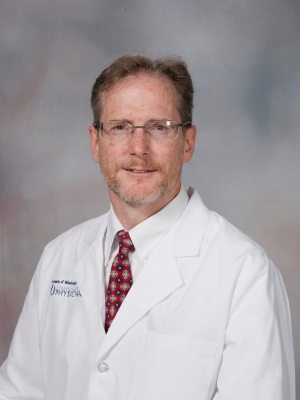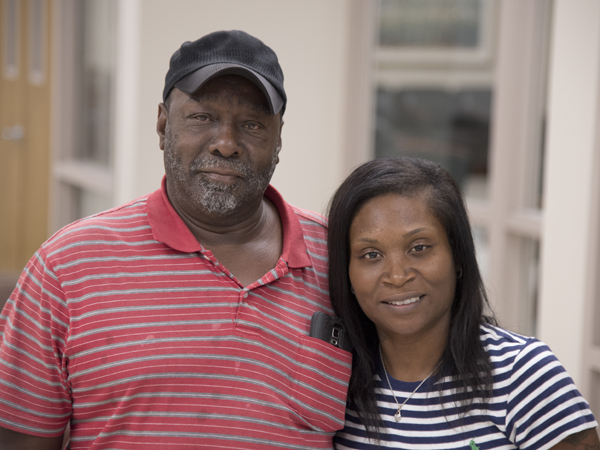Breast reconstruction technique offers tummy tuck, too

In a perfect world, Artoria Woodson of Fayette would never have had a high probably of developing breast cancer.
In this imperfect world, after a prophylactic bilateral mastectomy, she became a perfect candidate for a breast reconstruction technique offered at the University of Mississippi Medical Center that uses fat, skin and blood vessels from a woman's abdomen to reconstruct her breasts.
“I knew I didn't want implants. Your body may reject it,” she said. “I'd rather use my own tissue instead of something foreign.”
And, this athlete and mother of three knew she wanted to spare muscle if she could.
As she began to research techniques she settled on a flap procedure called DIEP, for deep inferior epigastric perforator artery. Surgeons move fat, skin and blood vessels from the abdomen to rebuild the breasts. Then, using microsurgical techniques, they must reattach the blood vessels so the tissue will survive. Since no muscle is involved, most women recover more quickly and have a higher probability of maintaining abdominal strength.
Several breast reconstruction techniques move muscle from a woman's abdomen or back to aid in reconstruction. Reattaching blood vessels is easier.
Her decision to trust her surgery to Dr. Benjamin McIntyre, a fellowship-trained plastic surgeon, and Dr. Shawn McKinney, a fellowship-trained breast surgeon, was based on a feeling. Both are members of the UMMC Cancer Institute breast services care team.

Based on her research, she came to see McIntyre about the DIEP flap. “He said I needed to see Dr. McKinney too,” she said. “She was with another patient but came over when she was through. I thought if you could make me feel I was important enough to drop everything and come see me I may be in the right place.
“I told Dr. McIntyre, if this is who comes with you, this is who I will choose,” she said. “I chose Dr. McIntyre and Dr. McKinney based on how they made me feel.”
Her interaction with the multidisciplinary breast team started after she saw Angelina Jolie's story of testing positive for mutations in a gene called BRCA that indicates a high chance of developing breast and ovarian cancer. With a history of breast cancer from maternal and paternal sides of the family, she thought she should be tested.
Woodson saw UMMC geneticist Dr. Joseph Maher. She had genetic testing and was BRCA positive, she said. Women who have a family history of breast cancer and who test positive for BRCA1 or BRCA2 mutations have a stronger chance of developing breast and ovarian cancer.

“That was really an emotional time. You're just a sitting duck,” Woodson said. “You're just waiting for someone to tell you it's your time.”
She decided before the testing what action she would take. “I said if the test is positive, I'm going to do something,” she said. Later she probably will have her ovaries removed too. For now, physicians are watching closely to delay that surgery as long as possible.
The breast flap reconstruction she chose is not rare but is harder to do, said McIntyre. Since blood vessels in skin and fat are tiny, they're harder to reconnect than those in muscle and require microsurgical techniques to reattach. Sparing the muscle means more abdominal strength for the patient down the road.
“This is a surgery for the medically fit,” he said. Sometimes, as in Woodson's case, it all can be done in one day.
When Woodson went to surgery, McKinney removed her breasts. Woodson choose to remove her nipples too since keeping them would have increased her breast cancer risk by 2 percent. Other women, in similar surgeries, have chosen a nipple sparing procedure.
Then McIntyre stepped in to remove the fat, skin and blood vessels from her abdomen, like a tummy tuck, and reshape her breasts.
“In a tummy tuck, we'd discard all the fat,” he said. “In this operation we're removing the fat and using it to build breasts.”
The all-in-one day surgery especially suits women like Woodson who are having it to prevent cancer. McIntyre said women who have an aggressive breast cancer and who need radiation therapy may choose to have a mastectomy and reconstruction separately.
In those cases, he makes a recommendation after he's discussed the case with the breast care team in its weekly conference.
The DIEP flap surgery offers several benefits over implants.
“The tissue usually is smoother since it's your own tissue. It's very lifelike. Implants periodically will rupture,” McIntyre said. After their initial recovery, few women have problems with DIEP flaps, he said.
Women who choose to have implants will need to see their surgeon every 12 to 18 months. Those who choose DIEP may go years between visits.
Woodson admits recovery has been hard for her. For the first four weeks her younger son, 16, had to help her in and out of bed. At two months out, she's ready to be more active.
“I was real active before the surgery,” she said. Running is a favorite activity and she sometimes trains with her son, Jackson State University track athlete Jadarius Perriman, 20.
At a recent appointment, her dad, Fred Thomas of Lorman, watched his daughter as she talked about learning to use a crossbow.
“Her health is more important than that crossbow,” he said, raising his eyebrows. “Maybe next year on the hunting. This year, she might get to go out there and look. That's all.”

McIntyre said most women can return to normal activities in six to eight weeks. Woodson? She pushes herself, he said, laughing. “I think she expected she'd be back to that in a week.”
For now, she's looking forward to a couple of touch ups. McIntyre said they'll use fat grafting in which he uses liposuction to remove extra fat, then places the suctioned fat to better contour the breasts. Later she'll have tattoos for her nipples too. That part of the procedure is typical for women undergoing breast reconstruction, he said.
Long term, she's contemplating some other aspects of testing positive for the BRCA gene, including how to counsel her children who also may have the genes.
If they also have BRCA mutations, it could place her daughter at higher risk for ovarian and breast cancer and her sons at a higher risk for breast and prostate cancers.
For now, she's talked to her sons, the oldest of her children, and each knows they may need to be tested at some point. Her daughter, 13, asked if she could get breast cancer. “I told her it was possible. Maybe she'll be tested when she's 18 and then she can make the choice,” Woodson said.
She told her daughter she wanted to have this surgery. “Why wouldn't I, if it could kill me?”
More about DIEP procedure: http://www.breastcancer.org/treatment/surgery/reconstruction/types/autologous/diep


